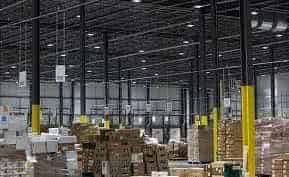Supply Chain Management
Why Connecting an Entire Supply Chain to a Network Platform Makes Sense

In my last post I explained the inherent limitations of most SaaS solutions yesterday. Today, I’ll go into a little more detail about why the network approach can create a demand-driven supply chain that runs with minimal inventory yet still maintains the highest possible service levels.
Supply chain systems today are dysfunctional. Each member uses discrete enterprise systems with little or no ability to communicate with any other systems (even those within the same company). If you don’t believe me, take the coordination quiz. This lack of upstream and downstream visibility typically means that retailers have little idea what conditions manufacturing plants are facing at a particular time, and vice versa. Given this state of affairs, is it any wonder that 70 percent of global executives surveyed by McKinsey see increased supply chain risk over the next few years? (McKinsey, Building the Supply Chain of the Future. 2011).
An intelligently planned network can make sense of this chaos by connecting to all trading partners, and taking and sharing relevant information among them in real time. It provides for instantaneous and seamless communication among network members, and even allows execution orders to be sent to the most far-flung or tangential nodes of the supply chain. Objectives are aligned. Put more simply, it creates a community. A community of companies oriented toward the end consumer.
When one considers the thousands of products on shelves, the millions of daily transactions, the constantly changing make-up of a supply chain’s members (e.g. new carriers, suppliers, etc), as well as ever-varying levels of supply and demand, it is easy to conclude that there is simply too much information, that there are too many moving parts for a single system to capture. In other words, you may agree that an underlying network platform is desirable, but is it feasible?
Absolutely. But you must begin with the right technology. In my next post, I’ll explore the 4 questions you should ask your potential SCM provider.
Want more on supply chain management software? Download our FREE Top 15 Supply Chain Management report to compare top solutions side-by-side, or read more articles on our Supply Chain and Logistics Research Center page.






